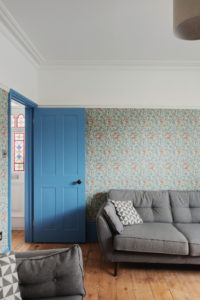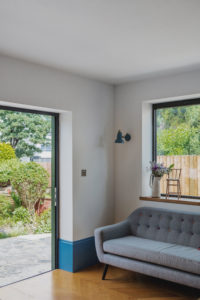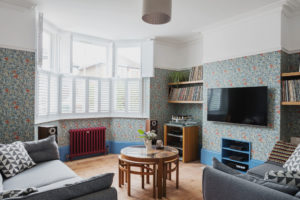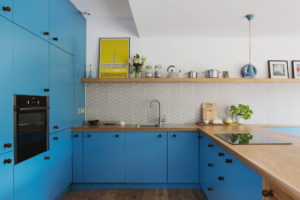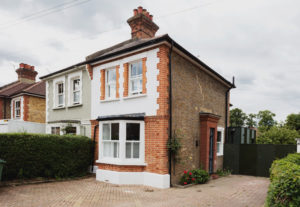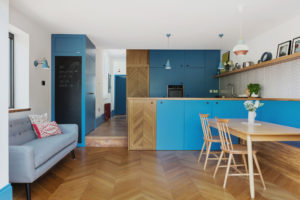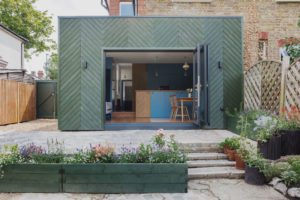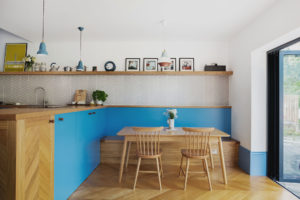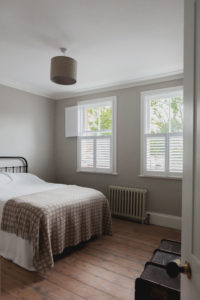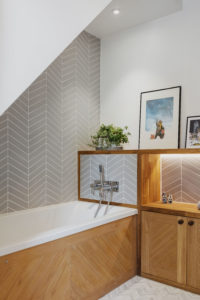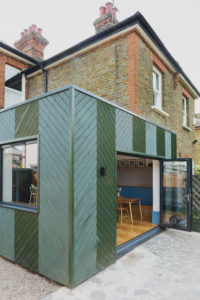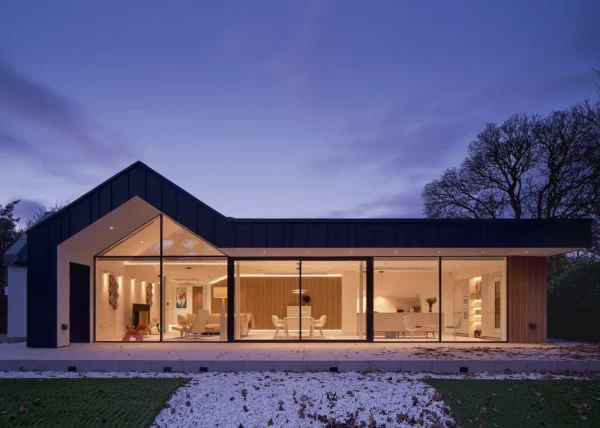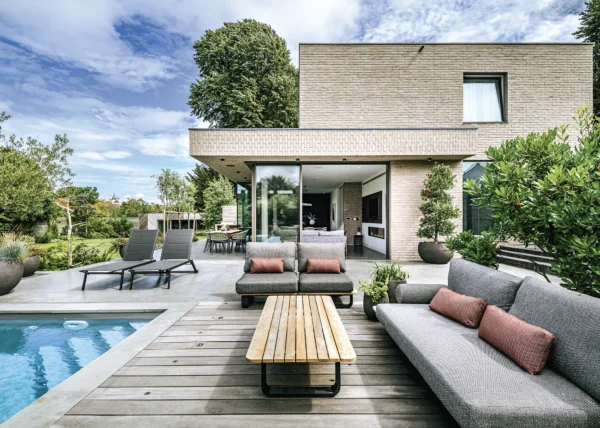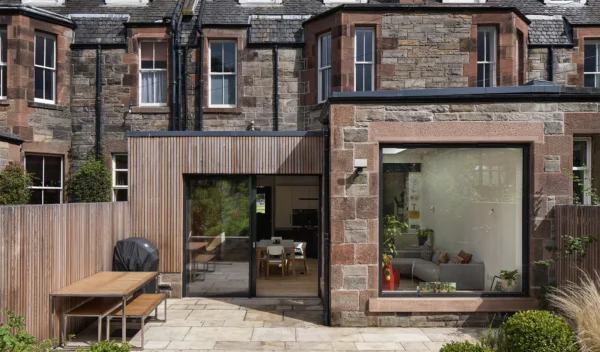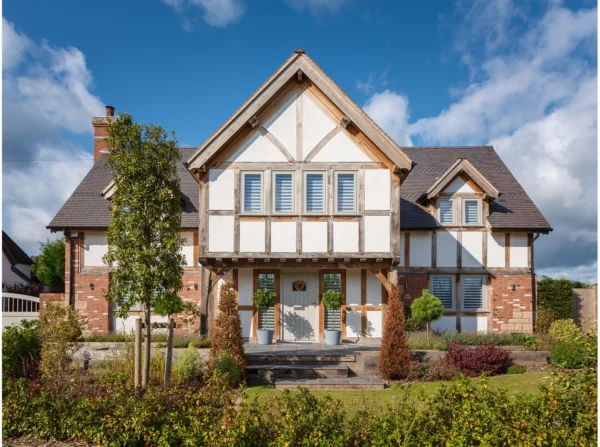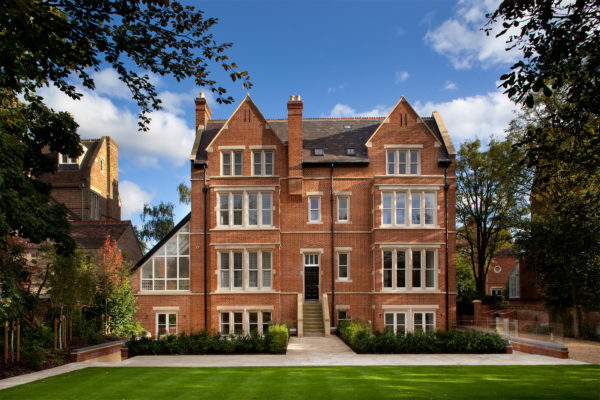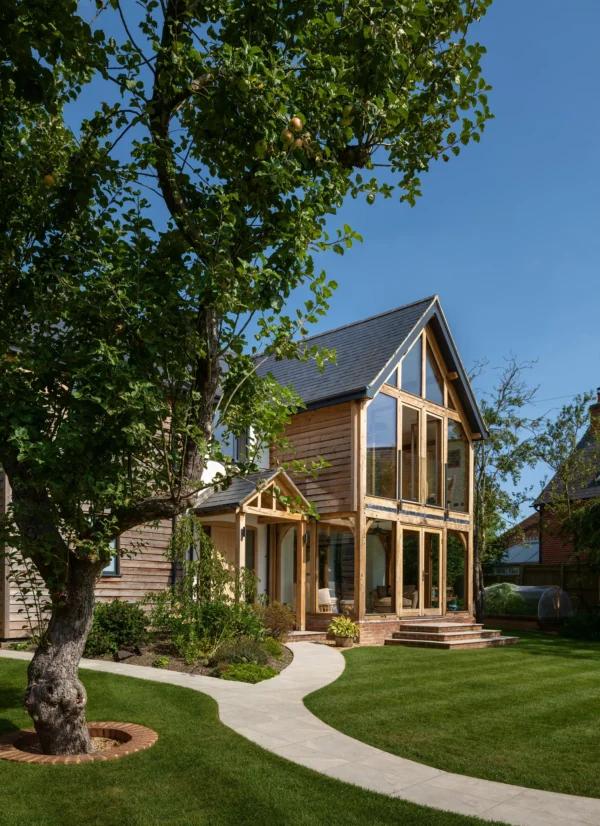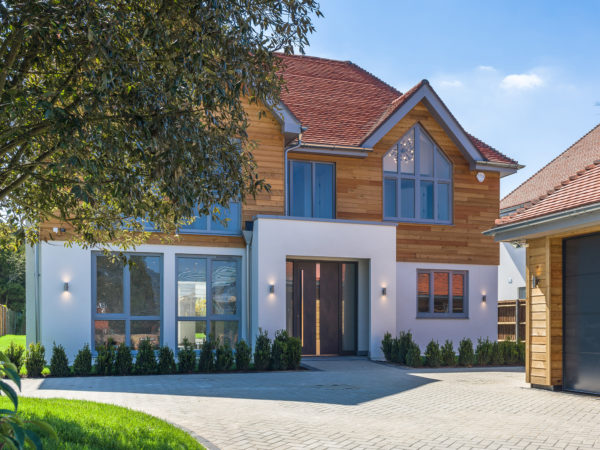Bespoke Extension and Renovation for Victorian Property
When Steven and Kayleigh Harp bought their home in South London, it had been victim to some fanciful DIY from its past owners.
The property’s major talking points included timber wall panelling, an odd-shaped bathroom dog-legging off the kitchen, and a transparent orange plastic structure built in above the stairs, lit from within to emit an eerie glow. The front of the property hadn’t fared much better, with flimsy aluminium windows and painted-over brickwork.
The couple are both architects, working under the name Harp & Harp, so the dark and dilapidated dwelling was no bother to them – quite the opposite, in fact. “I was almost drawn to how badly it had been treated,” says Steven.
- Names Steven & Kayleigh Harp
- Occupations Architects
- LocationSouth London
- Type of ProjectExtension and renovation
- StyleVictorian
- Construction methodBlockwork extension with chevron pattern Douglas fir cladding
- Project routeHomeowners designed; project management split between them & main contractor
- Plot sizeOne acre
- Property cost£450,000
- Bought2016
- House size101 m2
- Project cost£100,000
- project cost per m2£990
- total cost£550,000
- building work commenced October 2016
- Building work took 24 weeks
“We were looking for a property we could bring back to life.” Underneath the dodgy DIY and various updates was a house with good bones, like the high ceilings and handsome bay window at the front, as well as the potential to extend.
“We knew we had the ability to make quite a modern space at the back but retain the attractive period features at the front,” he says.
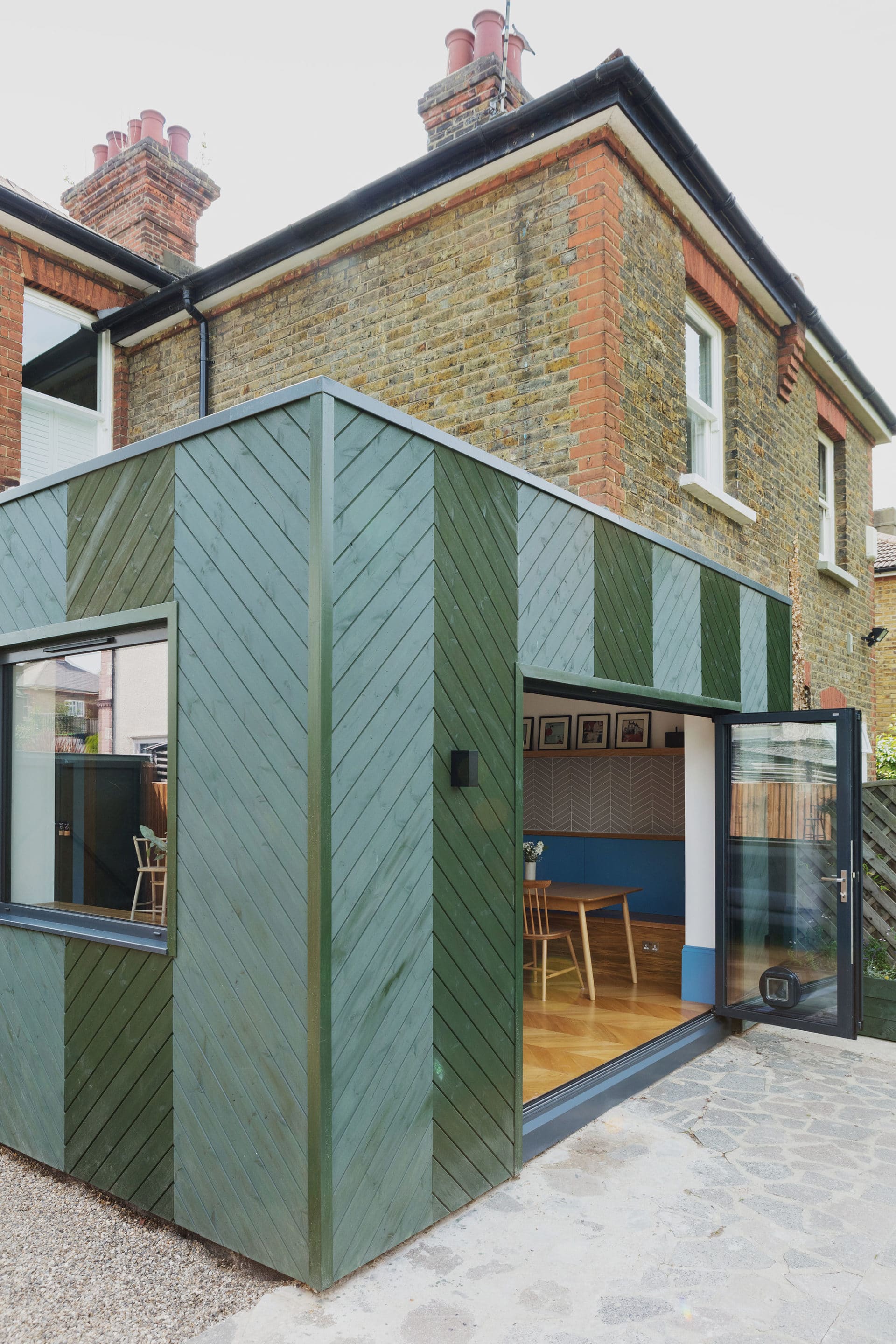
The extension is clad in Douglas fir laid in a chevron pattern and stained a forest green
The couple lived close by, so they also knew the immediate area was undergoing lots of regeneration, plus, the house was under their budget. It was an easy decision to go ahead and buy it.
A modest extension
Steven and Kayleigh have added just 8m2 to the property, but it has made a huge difference to the way the house looks and functions. The rear extension slightly overshoots to the side to maximise space.
Clad in Douglas fir stained a handsome forest green, it contrasts with the red-brick Victorian building, but the colour isn’t completely alien, either.
“We’re in suburbia and actually you see loads of that shade here, on fences and sheds, plus we have a very green outlook,” says Steven. “I originally saw the colour used on a public bench in Berlin. We said afterwards, ‘shall we do an extension like that?’ We thought it looked really nice.”
The chevron pattern of the cladding also picks up on motifs in the existing boundary fences.
The couple applied for planning permission but this was more of a just-in-case scenario, because of concerns over the viability of the timber cladding.
“We think we could have done it under permitted development, but the policy wording states that materials have to match the existing house. We didn’t want to take any risks,” says Steven. The project was passed by the local council instantly. “We also told both sets of neighbours what we were going to do when we moved in, and they’ve been amazing throughout,” he adds.
Forward momentum
Steven and Kayleigh found their main contractor through a builder they were already familiar with from their architectural work. While their contact wasn’t willing to take on this smaller project outside his usual catchment area, he suggested that the couple borrow one of his foremen for the build.
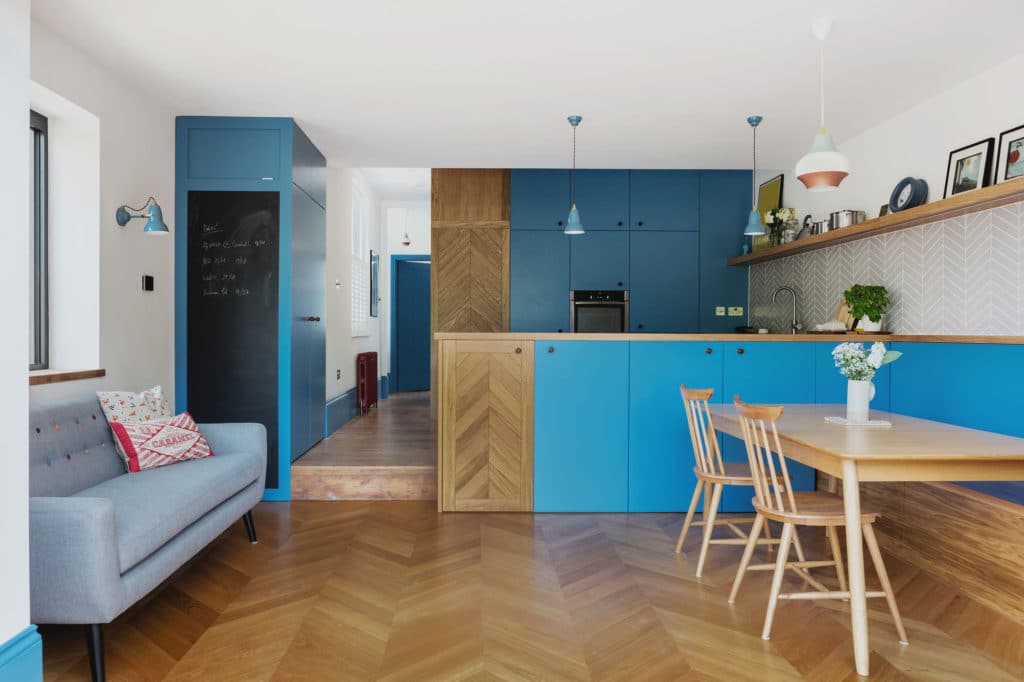
A row of shallow cabinets separates the kitchen from the dining space in the open-plan room
The project management responsibility was split between the larger main contractor, who took on the role of sourcing and ordering materials; his foreman, who managed the
site on a day to day basis; and Steven, who says that his main job was essentially to chivvy everything along.
“I know from working on our other projects that if a building company is good, it’s because the main guy who runs it has the ability to get on site and push people forwards all the time. A lot of it’s about making sure everyone’s motivated,” says Steven.
He turned up for a weekly site visit every Saturday and ran through whether things were on schedule, and what he expected to happen before his next visit. Although there was no formal contract in place, largely because of the trust the two parties already had in one another, the tender was broken down into clearly defined stages. That way, it was easy to identify when a payment for completed work should be released.
This worked well until the final push, when Steven says, “I think the foreman started to get rather comfortable. I had to come down a bit more often and make a lot of tick lists. It helped that I was doing all the decorating in order to bring the project in on budget – I had to take four weeks off work, my whole annual leave. But it meant I was on site all the time so I could push them to get it finished.”
Rebuilt on the inside
The contractors stripped everything back to bare brick and timber, before building the structure back up again, with new heating, plumbing and wiring. A layer of damp-proof breathable render was added over the internal brickwork to help combat the moisture that had invaded the walls.
Several layers of impermeable paint were removed from the front facade, and the lime mortar was repointed to help solve the issue, allowing the house to regulate moisture in the way that had originally been intended.
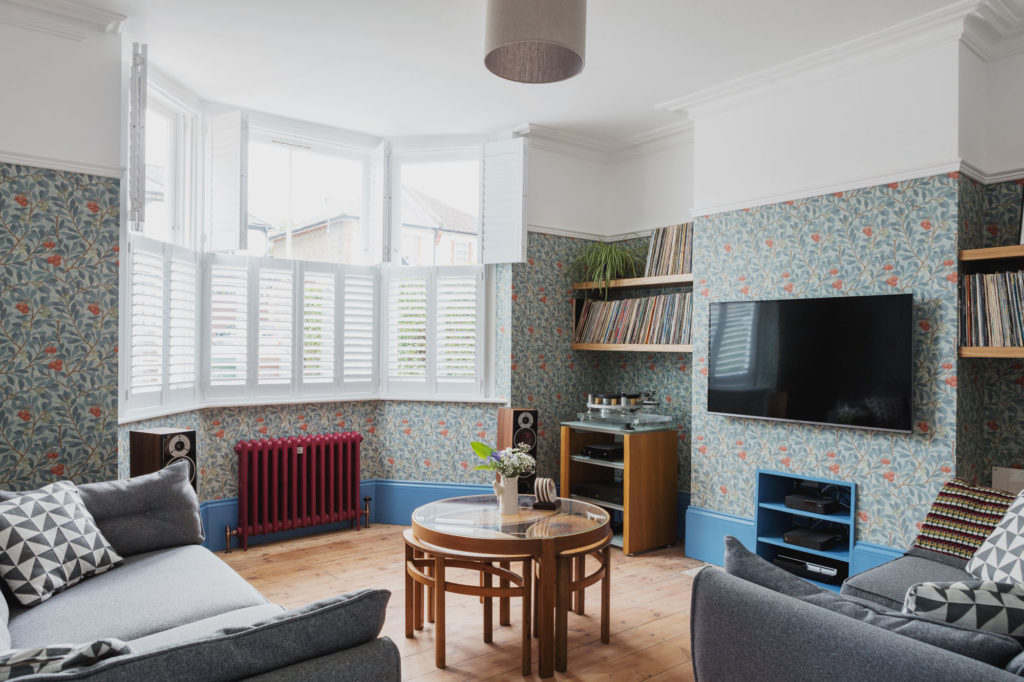
The large bay window and high ceilings were two of the features that originally attracted Steven and Kayleigh to the rundown property
The layout upstairs remains the same, but every surface has been updated. Beautifully crafted timber sash windows, fitted internally with plantation shutters, replace the old aluminium units. Chunky, traditional-style radiators have been installed. Downstairs, the new bifold doors and side window have modern aluminium frames.
Thanks to Steven and Kayleigh’s professional experience in building projects and close relationship with their main contractor, there were no unforeseen issues along the way, and timescales and budgets were kept to.
The couple lived with Steven’s parents during the construction phase, funding the project from savings and equity from their previous house. The couple credit their success to having thoroughly thought everything through in the first place.
This included creating a 3D digital model of the proposed scheme, and getting everything priced up during the tendering, even down to the light fittings. “Our whole process is about making as many of the decisions as you can before a builder sets foot on site,” says Steven.
Economical choices
Steven and Kayleigh’s completed house is quirky – but no longer in the same way as when they bought it. The green chevron-pattern external cladding lends character to the extension. Inside, the sky-blue woodwork used for the extra-tall skirting boards, doors and kitchen cabinets contrasts with rust-red radiators, bringing even more personality.
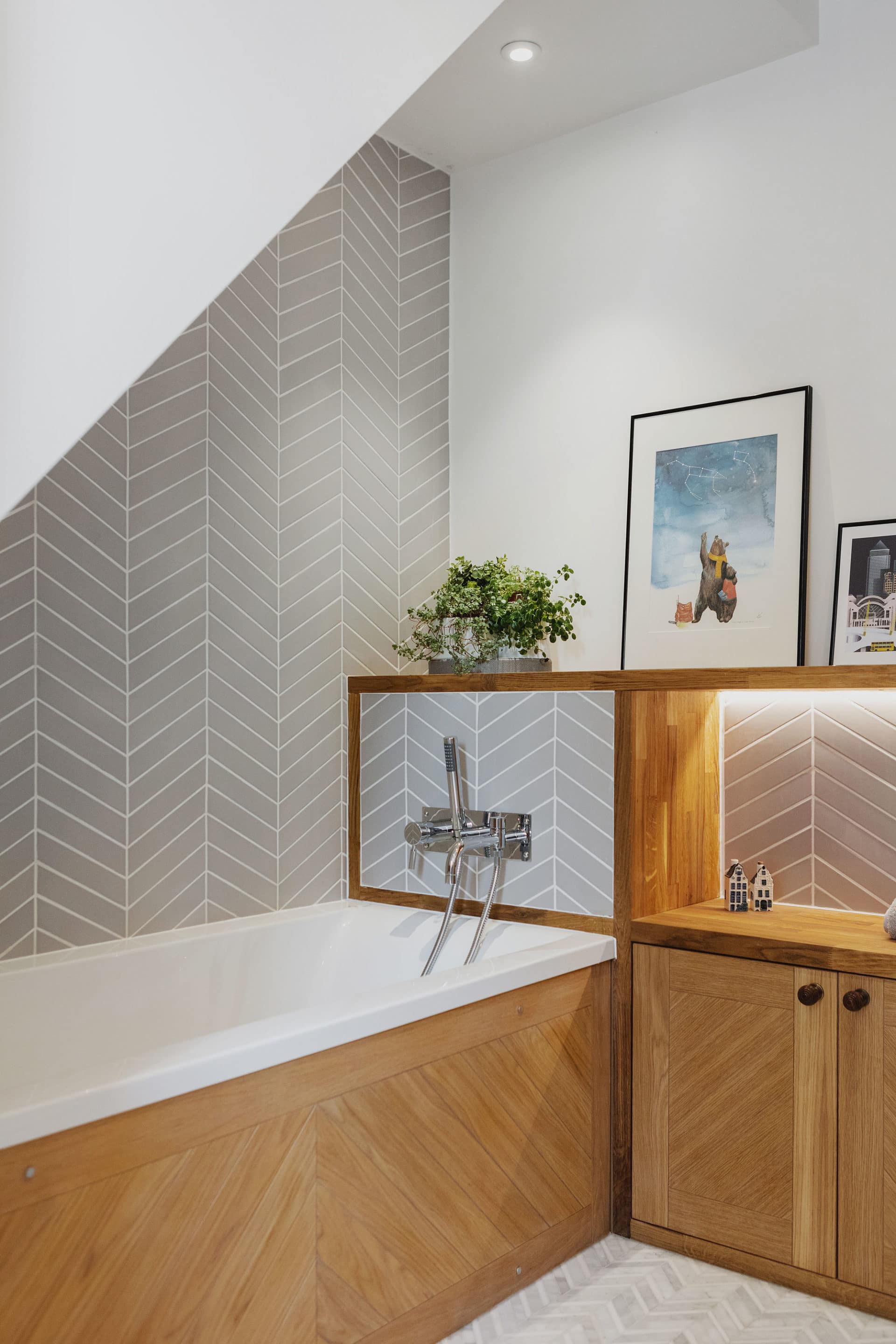
The bathroom is partially tucked under the stairs to make the best use of space on the ground floor
However, this isn’t individuality at the expense of practicality – the whole project revolved around carefully choosing where the budget was allocated and making every space work hard.
The extension is deliberately modest in size, thus reducing costs on everything from foundations through to electrics, compared to the much larger addition the couple could have opted for.
It’s also made from simple blockwork. “We wanted it to be high quality, rather than massive, so we designed it to be simple and cost-effective,” says Steven. “It uses space really economically.”
These measures include forgoing a utility room and housing the boiler, washer and dryer in a large cupboard that breaks up the boundary between the kitchen and dining space. Plus, the bathroom is tucked away in the centre of the ground floor, partially under the stairs.
Bespoke joinery in the kitchen-diner also allows the space to be used very economically. For example, lift-up storage benches run along one wall, and an extra-deep peninsula worktop incorporates a run of cupboards on the side facing away from the kitchen.
| The design phase is so important. We spent a lot of time and energy planning, drawing, modelling and specifying every detail prior to construction. This included building a fully detailed 3D model that enabled us to ‘walk’ through the space. We could then clearly visualise the layout to tweak and refine certain aspects, ensuring we didn’t have to make costly changes once on site.
Our joiners were amazing and very good value, building a bespoke kitchen for the same price as a mid-range off-the-shelf one can cost. The space includes lots of integrated elements that really make a difference, like the bench storage. They were a source of good advice, for instance, suggesting we add 20% gloss to the matt-finish paint we wanted. You don’t notice it but it really helps with keeping it clean. Bold colours were always something that we wanted to incorporate. Upstairs we went for grey walls and black radiators, and looking back, we wish we’d been bolder on this storey. A lot of builders would have suggested creating a much larger box-like extension. But we focused on having something high quality, rather than massive, which we knew would work for us. |
This provides lots of additional space, despite being fairly shallow. The chevron cladding is picked up inside, with the same configuration used for the oak flooring, cupboard fronts and wall tiles.
Making sure that no room was redundant or underused was important, according to Steven. “We use every space. The front room is where the TV and music are, so we might spend our time there in the evenings. However, we tend to be in the extension in the morning and when we have people over. Even though it’s not a very big house, we’ve found that it’s great for socialising, especially when it’s hot and we can have the doors open on to the garden.”
Steven and Kayleigh’s project shows how quality of space is just as important as quantity. By seeing the potential in a rundown house that had a good bone structure underneath, and by putting the budget into a modest extension with lots of beautifully crafted details, they’ve built a lively family home that’s robust and practical.
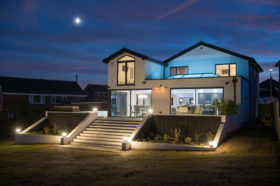
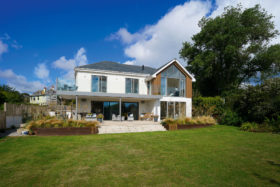






























































































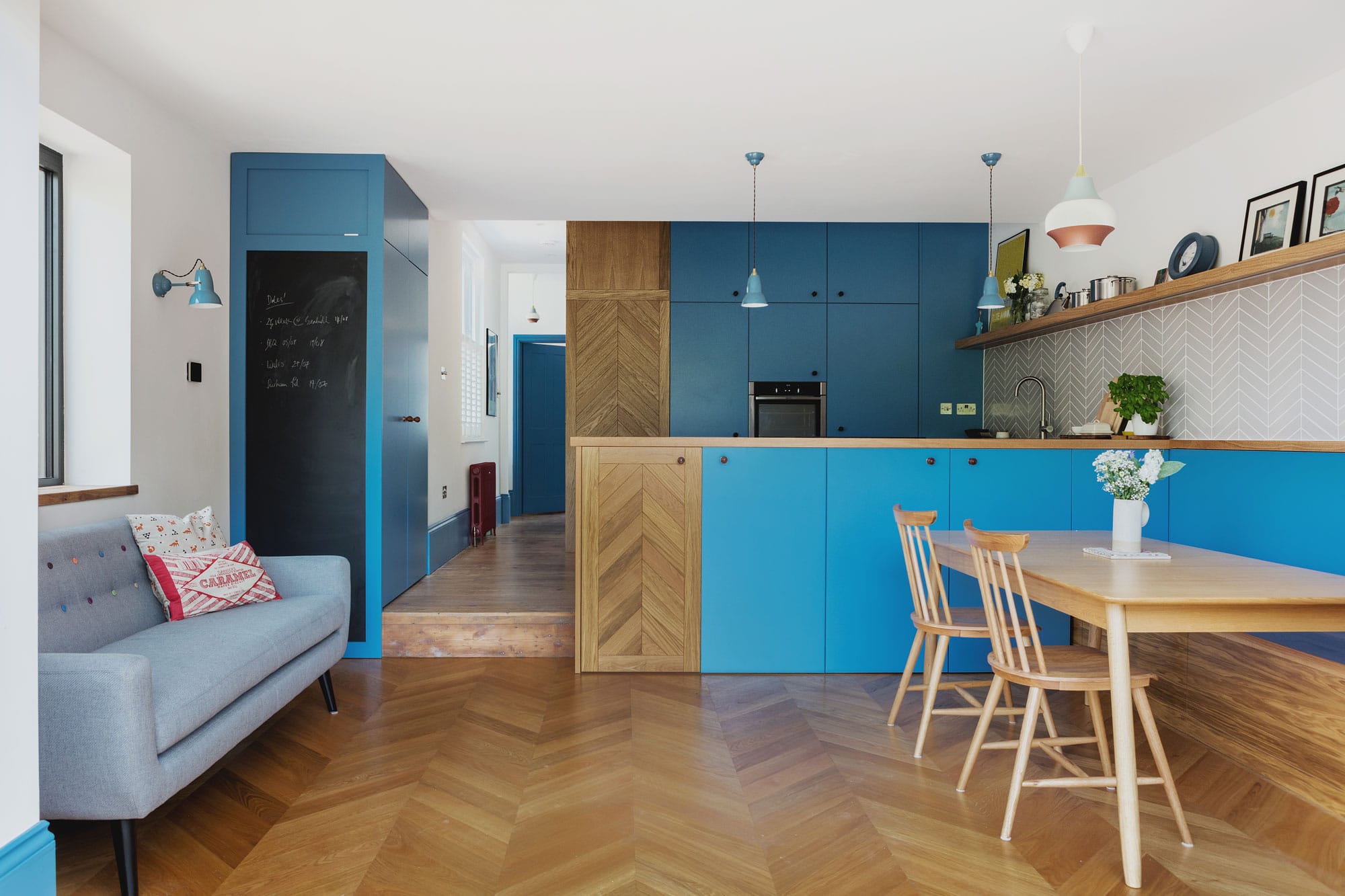
 Login/register to save Article for later
Login/register to save Article for later

